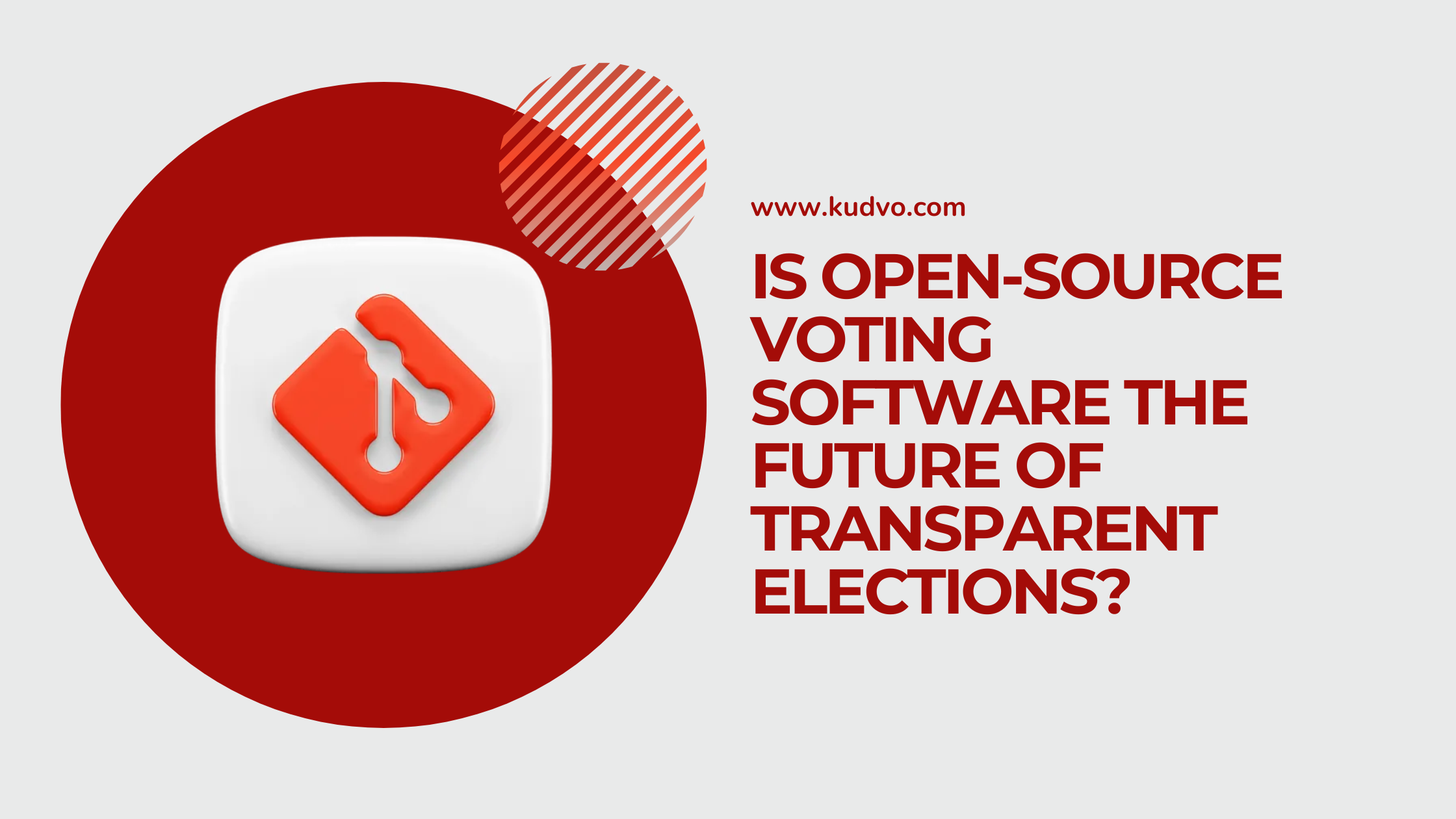Is Open-Source Voting Software the Future of Transparent Elections?
Introduction
Can we truly trust election results if we can't see how the votes are counted?
As public trust in digital systems continues to waver, transparency in elections has become a top concern. This is where open-source voting software steps in—with the promise of accessible, auditable code and improved public confidence.
In this post, we'll explore what open-source voting software is, its potential to transform elections, and the challenges it faces. By the end, you'll have a clear understanding of whether this technology could shape the future of democratic voting.
For more insights into secure digital voting systems, visit www.kudvo.com.
1. What Is Open-Source Voting Software?
Open-source voting software refers to election systems where the underlying code is freely available to the public. This means:
Anyone can inspect the code
Security researchers can test it for vulnerabilities
Developers can contribute to improvements
This level of transparency stands in contrast to proprietary systems, where code is closed off and managed by private vendors. Open-source models promote accountability, reduce the risk of hidden flaws, and encourage collaborative innovation.
Example:
In 2019, San Francisco’s Department of Elections invested in developing an open-source voting system to reduce reliance on expensive, opaque commercial platforms.
2. Why Transparency Matters in Elections
Trust is the backbone of any election. If voters doubt the integrity of the process, it can erode confidence in democracy itself.
Open-source software addresses this by:
Allowing independent audits before and after elections
Reducing “black box” concerns tied to proprietary systems
Encouraging public trust by making processes visible
Key Stats:
A 2022 Pew Research study found that 59% of U.S. voters support increased transparency in how votes are processed.
Election watchdog groups and advocacy organizations globally have begun pushing for open-source alternatives.
3. Pros and Cons of Open-Source Voting Software
Like any tech solution, open-source voting comes with both benefits and challenges.
✅ Pros
Transparency: Code can be reviewed by anyone
Security: Bugs and vulnerabilities are spotted quickly
Customizability: Can be tailored to unique needs
Community Support: Developers worldwide can collaborate
❌ Cons
Implementation Costs: Building secure hardware/software still requires funding
Technical Expertise: Requires qualified personnel to manage and audit
Fragmentation Risk: Too many versions can reduce consistency
Despite challenges, organizations like Kudvo are bridging the gap by offering secure, user-friendly platforms that can integrate open principles without sacrificing functionality.
4. The Future Outlook: Where Do We Go from Here?
As public demand for election integrity grows, governments and organizations are starting to experiment with open-source systems. But adoption isn’t just about technology—it’s about policy, education, and trust-building.
What Needs to Happen Next?
Governments must support open-source funding and policy development.
Civic organizations should educate voters on how these systems work.
Vendors need to provide hybrid models (open + supported platforms) for ease of adoption.
Case Study:
New Hampshire piloted an open-source tabulation tool in a local election, showing promising results in cost-savings and voter trust.
Conclusion
Open-source voting software offers a compelling vision for the future: elections that are not just secure, but transparent, auditable, and publicly verifiable.
To recap:
Open-source systems foster trust through code transparency.
They empower independent oversight and rapid improvement.
While challenges exist, they can be mitigated with support and smart implementation.
If your organization is exploring digital voting, consider platforms like Kudvo that prioritize both security and transparency—whether open-source or hybrid.
The future of elections is not just about going digital—it’s about doing it openly and responsibly.
